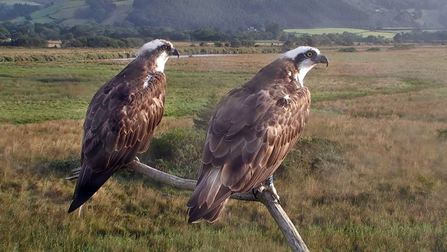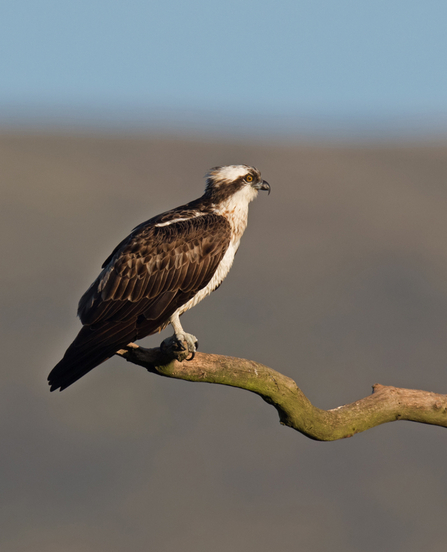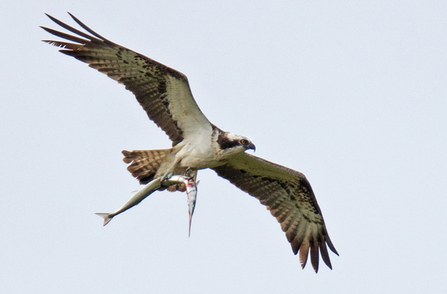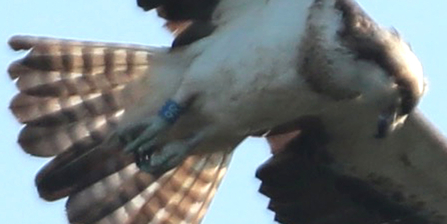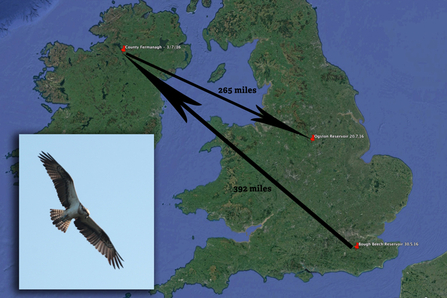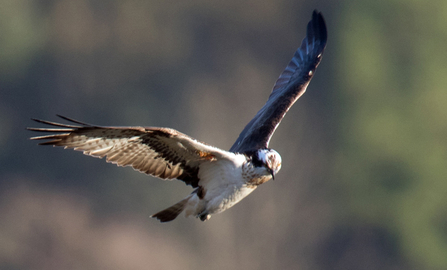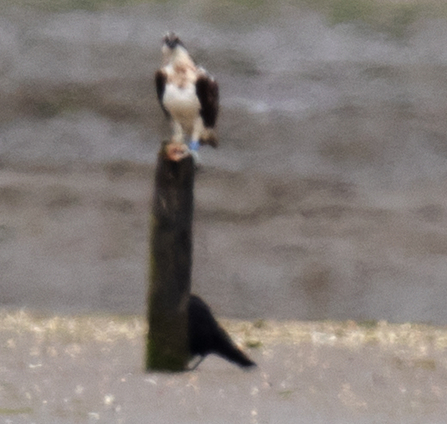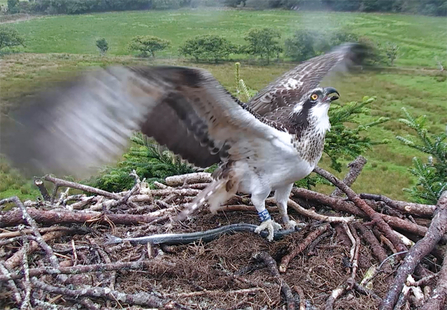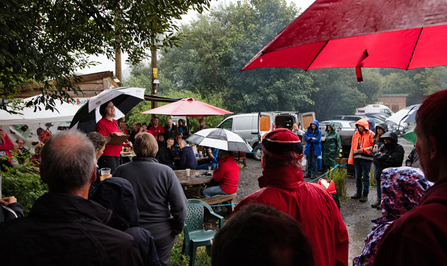Monty has left the building.
At 08:28 on Thursday morning, 1st September, he spent his last few seconds on the Dyfi this year. He perched just inches away from Blue 24 on the Boing perch, protesting, as if he knew we would soon be replacing it with a stronger perch!
Monty looked around one last time and with little fanfare, bolted straight upwards and out of our lives for another seven months. He had fulfilled his contract with Montgomeryshire Wildlife Trust; we have him from the first week in April to the first week in September every year. He arrived at 13:07 on 3rd April and left at 08:28 on 1st September - 153 days in all, that's 42% of his year.
Monty & Blue 24 on the Boing perch on Thursday morning, together for the last time in 2016

